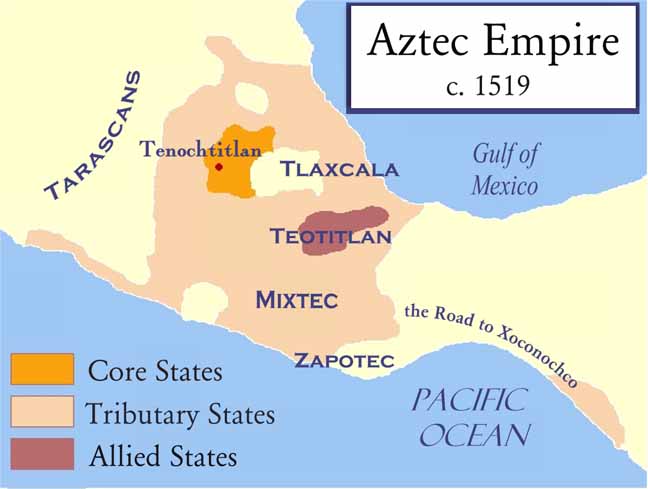The End of the Aztec Empire

While Cortes was in the city, he heard that a large Spanish force had arrived on the coast to arrest him. Rushing to the coast, Cortes defeated the force sent to capture him and persuaded the defeated soldiers to join his ranks. During his absence, his lieutenant, Pedro de Alvarado, attacked the Aztecs in their temple while they were celebrating the festival of Toxcatl. According to the Spanish, they were interrupting a human sacrifice; to the Aztecs, it was an unprovoked massacre of their noblemen.
The massacre at the temple turned the natives against both the Spanish and their own king, Montezuma. The Spanish demanded that Montezuma address his people and convince them to allow the Spanish to leave peacefully. Instead, the Aztec populace greeted their king with a hail of stones. Struck by a rock, Montezuma fell and died shortly thereafter, either from his injuries or at the hands of the Spanish. On July 1, 1520, Cortes' small army left their compound and headed for the causeway out of the city. Upon reaching the Tlacopan causeway, they were spotted by Aztec warriors. As they crossed the causeway, in an event that became known as La Noche Triste ("The Sad Night"), thousands of Aztec warriors attacked them. Weighed down by the gold they were carrying, over half of the Spanish soldiers and more than 1,000 of Cortes' native allies perished.
The Aztecs could not savor their victory over Cortes for long, as the Spanish had left behind a devastating gift: disease, most likely smallpox. The disease ravaged the Aztec population both physically and emotionally. When Cortes returned a few months later with a larger Spanish army and thousands of Native American allies, they easily overcame the weakened Aztec forces. Despite fighting to the bitter end, the Aztecs could not withstand the better-armed Spanish. The city of Tenochtitlan fell, and with it, the Aztec Empire collapsed.
Spanish Account of the Massacre
